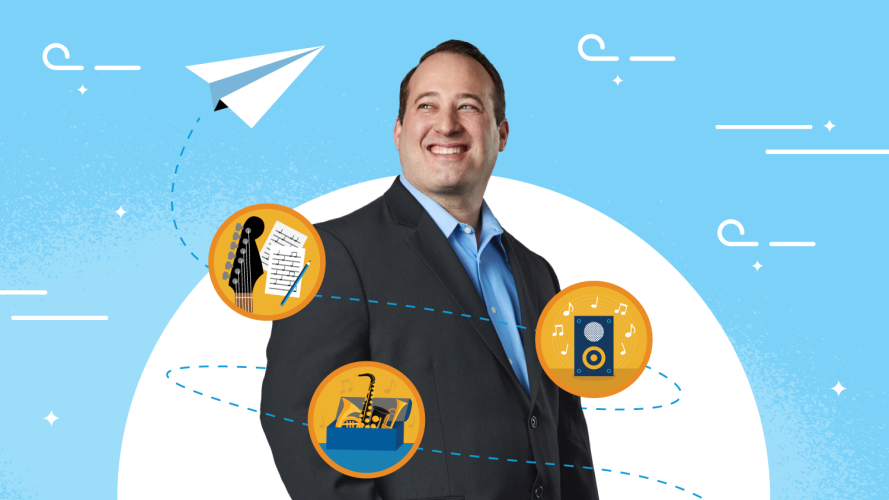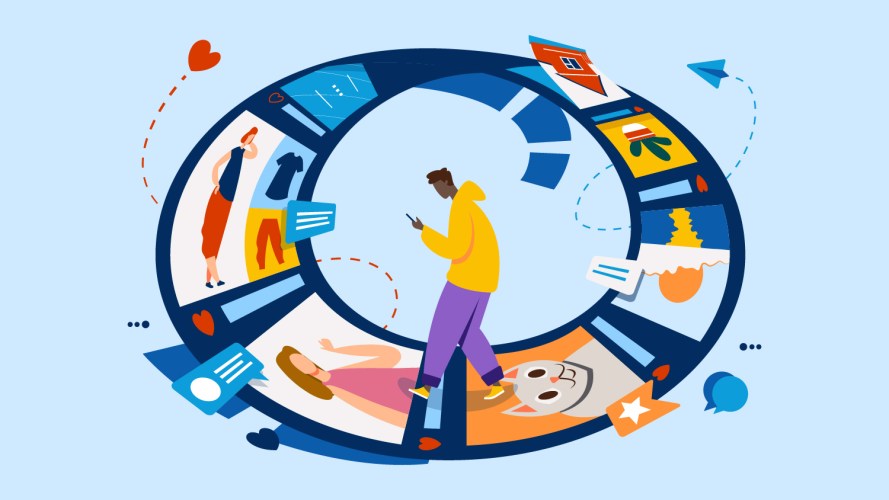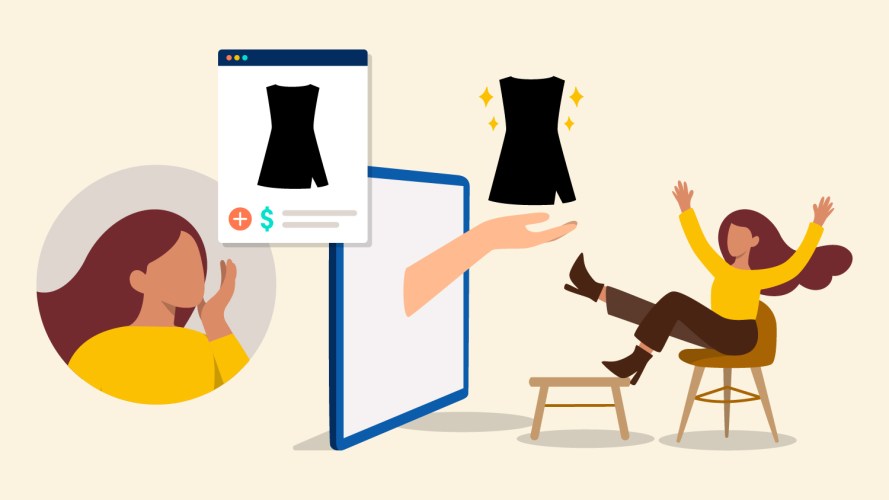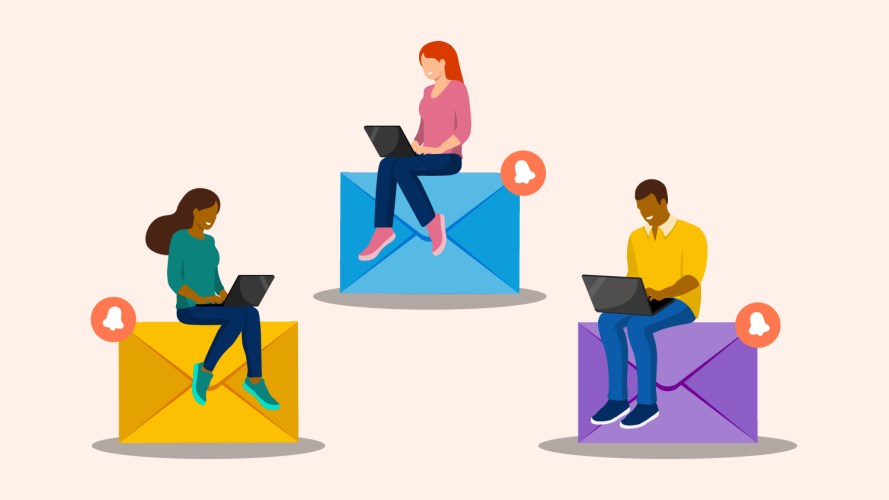3 Steps for a Winning Digital Engagement Strategy
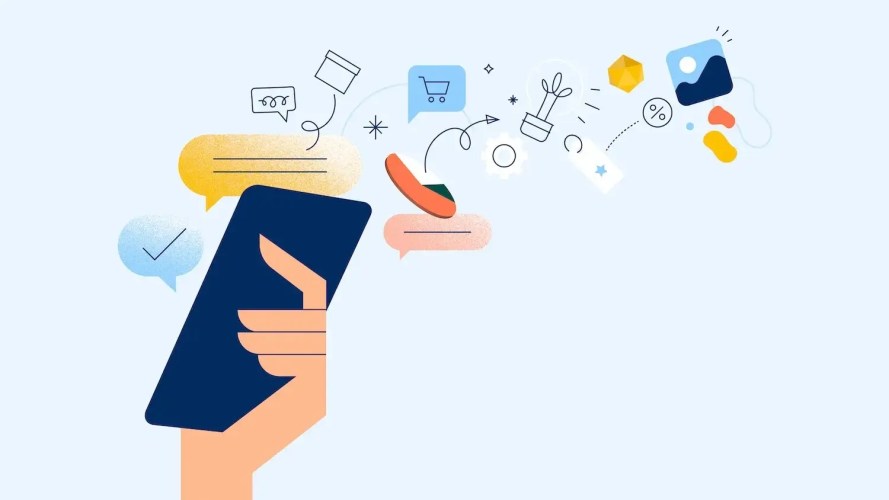
The customer experience is at the heart of brand loyalty today. Learn how to create digital experiences that will attract and keep customers engaged for the long haul.

Jay Wilder
How can you increase digital engagement? Anticipate your customers’ needs — and tailor your messaging to fit those needs. We found that currently 73% of customers expect companies to understand their unique needs and expectations. This demand for personalization will only continue to grow. So understanding and using customer data effectively, and using AI to make the most of that data, will help you create lasting connections.
But how you collect customer data will need to change, too. Third-party cookies, once a cornerstone of data collection for marketers, are slowly being phased out to improve consumer privacy protection. The good news is, there’s a blueprint for how to tackle these changes and build a digital engagement strategy that puts your customer’s needs at the center of every interaction.
Let’s break down exactly what digital engagement is, what makes it challenging, and how you can overcome those challenges with the help of AI and a strong strategy.
What are the best multichannel marketing hubs?
Gartner recently evaluated and analyzed 14 vendors. Learn who was named as a leader for their ability to execute and completeness of vision.



What is digital engagement and why is it important?
Digital engagement is how your company interacts with potential and current customers across digital channels. Each interaction a customer has with your company’s social media, email, and website adds up to create a unique digital engagement experience, and that experience is essential. With a robust digital engagement strategy, you can build customer relationships that last.
Digital engagement examples
- Using self-service options for questions, such as chatbots on a website or app
- Watching product tutorials on a website or via YouTube
- Interacting with posts on social media
- Searching for a service online and clicking on a website in the results
- Reading a weekly email newsletter or blog post
- Clicking a call to action button to learn more about a product from an email marketing campaign
- Interacting with a targeted ad on another site
- Responding to a customer survey, leaving a review, or otherwise volunteering their own opinion on how you’re doing
Creating brand loyalty with digital engagement
How do you win (and keep) the hearts of customers in a competitive market? In 2022, nearly two-thirds of customers switched brands at least once for different reasons. With so many online options, it’s easy for people to discover new brands that meet their ever-changing needs. So what’s the key to making sure they choose yours?
You may think an award-winning product or an innovative service with raving online reviews is enough. It certainly helps, but over 85% of customers say a company’s digital experience is just as necessary as its product or services — the highest it’s ever been. Marketers who acknowledge and address this demand will be able to build relationships with customers that keep them coming back for more.
What are the marketing challenges — and solutions — for digital engagement?
These days, businesses across every industry have made their online presence a priority. Not only has our digital shopping increased, but much of our day-to-day life — from working to attending doctor appointments — also happens online. As a result, the digital space is becoming a bit crowded, which makes digital engagement challenging in a few key ways. Businesses must:
- Compete against an abundance of online content and ads
- Create a seamless experience across various new digital channels
- Reach the right target audience to improve ROI
- Stay on top of ever-changing consumer data protection laws
It’s also important to remember that laws around how companies collect personal consumer data are changing. Third-party data collection, which has traditionally been an important data source for marketers, is becoming stricter and even prohibited in some states. To stay compliant and still deliver the personalized experiences customers crave, you need to ensure your data capture methods are current.
To address these challenges, you can harness the power of first-party data — information that comes directly from the customer. This includes past purchase history, phone calls, website visits, click-through rates on emails, and more. First-party data is usually captured by a customer relationship management (CRM) system that helps collect, structure, and analyze data easily. Generative AI is a powerful tool, too — helping you decipher first-party data and deliver personalized content at scale.
Be the brand your customers just can’t quit
There are four main pillars to customer retention in the AI era: humanity, agility, unification, and trustworthiness. Learn why each one matters, and how to make sure you’re doing them all right.



Best practices when using AI for digital engagement
While many marketers have begun experimenting with generative AI and see its game-changing potential, nearly 45% told us they need to learn how to get the most out of the technology. Let’s look closer at how you can use AI for effective digital engagement.
Chatbots
AI-powered chatbots are not only a cost-effective way to solve customer issues quickly, but they can also help you tailor future marketing efforts. Take a clothing retailer, for example. If a customer uses the retailer’s website chatbot to complete a return and tells the chatbot the fit is too large and the color is darker than they prefer, now the retailer has more information about this customer’s preferences. The marketing team can now send personalized and automated product recommendations via email or through ads on social platforms.
With AI, you can take email to the next level. One well-known food retailer uses a rich database from its online recipe sites and education funding program, where users scan receipts and view recipes online or through an app. All of that data goes into the company’s CRM and is analyzed. AI then makes one-to-one product and recipe recommendations for customers. AI also helps the company segment its audience to find the best time to send an email based on previous engagement history. This approach is working for the food company, helping to triple customer engagement.
Content creation
With an abundance of online ads, it can be tough to grab the attention of your audience. Through content marketing, brands can offer educational information through blog posts, webinars, videos, reports, and e-books to keep customers engaged in different campaigns across various digital channels.
But what topics should you cover? What will lead to conversions? More than 70% of marketers are currently using AI to inspire them and assist with writing copy. A CRM with AI capabilities can also analyze content performance to determine what resonates most with your audience, enabling you to make a big impact.
Targeting
Of course, none of that high-quality content matters unless it reaches the right audience, and AI can help with that too. By analyzing all your customer data, AI can identify preferences, habits, and interests in your customer base that would take hundreds of man hours to parse, and make sure that the right context reaches the right audience. It can also help make sure that it reaches them at the right time and place by identifying their preferred channels and what times of day they’re most responsive to marketing.
Three steps for building a digital engagement strategy
You’ve got the data. You’ve incorporated AI. You’ve personalized experiences. Now it’s time to set your digital engagement strategy up for success.
1. Map the customer journey
Customer journey mapping is a visual representation of a customer’s experience across your brand’s platforms.
Typically, marketers create a customer journey map for each of their buyer personas. Millennial personas, for example, tend to find products through social media, research about them on company websites, then make a purchase on a laptop. With this information, you can better predict and plan for prospects’ next steps across different digital channels, aligning your customer service, marketing, and sales efforts with it.
2. Lean into account-based marketing (ABM)
Let’s put those customer journey maps to good use. Account-based marketing — particularly for B2B brands — helps improve the customer journey by centering marketing, sales, and customer service around accounts. Teams work side-by-side to nurture leads to deliver personalized content at the right time.
One major ride-sharing company has used this approach to send retargeting messages to different subsets of their audience, particularly those who have stopped engaging. The marketing team pushes CRM data into third-party advertising platforms to send relevant content to keep leads moving down the sales funnel.
3. Personalize the experience across every channel
More than 70% of customers expect brands to understand their unique needs. Harnessing first-party data is critical to ensure personalization for each interaction across every channel.
It’s how one automotive racing giant creates a consistent and personalized brand experience across in-person events and digital channels. When fans attend an event on race day, brand representatives know the fan’s name, driver preferences, and past purchase history thanks to CRM first-party data. Post-race, the marketing team can follow up with communications on their favorite driver or by recommending merchandise from the event.
It can be challenging for marketers to analyze the sheer amount of first-party data required to implement these three steps. But the right CRM can help centralize all customer data and organize it in an accessible way, so marketing teams can build campaigns based on facts, not assumptions.
A strong digital engagement strategy requires understanding our customers’ preferences, behaviors, and needs. By implementing these best practices, you can show your customers that you understand them as individuals. That intimate level of personalization is what builds the kind of trust and loyalty that keeps them coming back.
Take your digital engagement strategy to the next level
Make sure your strategy is equipped with the right data, personalization, and AI tools to build unbreakable customer bonds.


















